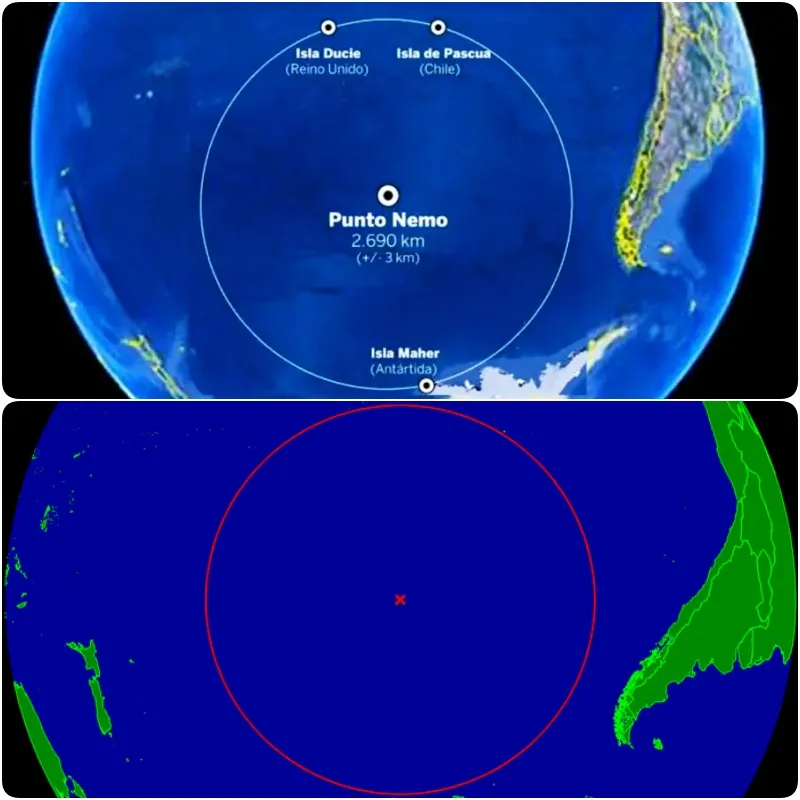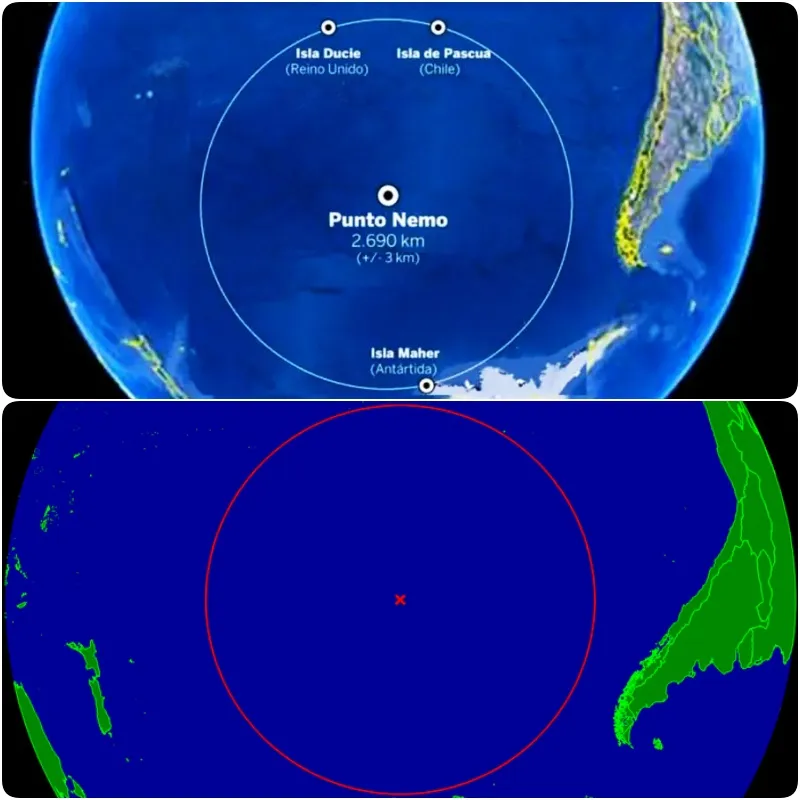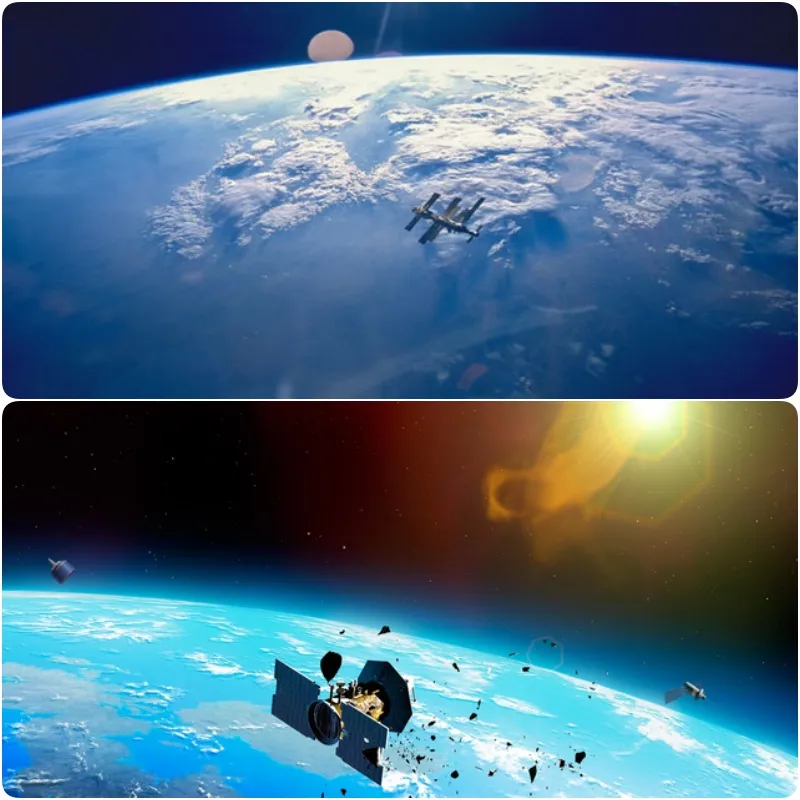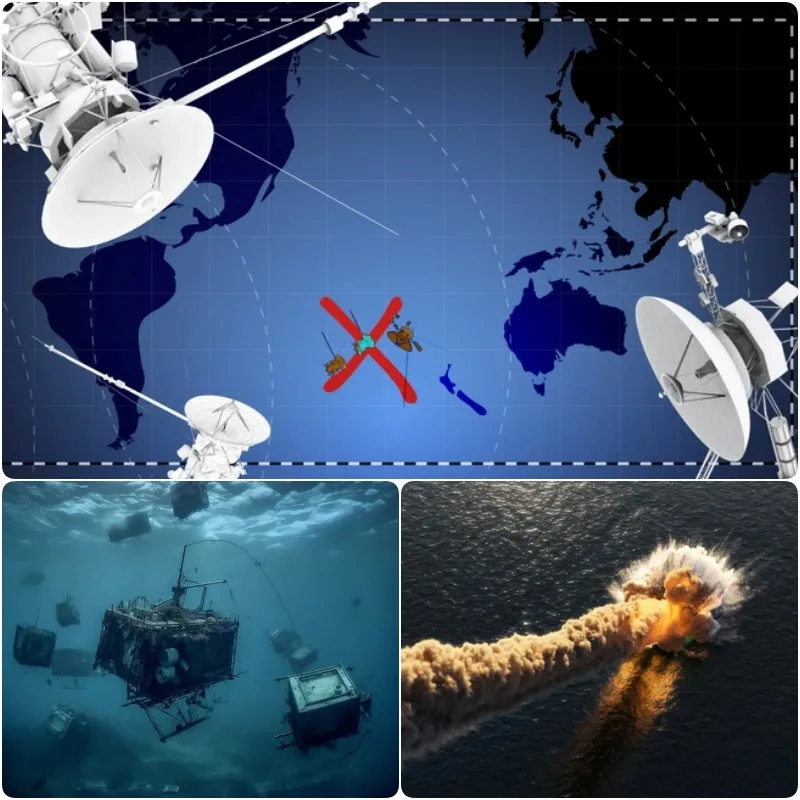
If You Want to Escape Humanity, This is the Place to Go
Point Nemo: The Most Isolated Place on Earth
Have you ever wondered where the most isolated place from humanity might be? Antarctica? It could be, but there’s an even more surprising spot.
Sometimes, when life becomes overwhelming and you wish to escape the world, you might consider a place far from civilization. While Antarctica is a remote option, if you can survive at sea, the most isolated place on Earth is Point Nemo, also known as the “Point of Inaccessibility.”

What is Point Nemo?
Point Nemo, or the “Oceanic Pole of Inaccessibility,” is located at coordinates 48°52.6′S 123°23.6′W. It is the farthest point from land in the entire ocean. The nearest landmasses to Point Nemo are Ducie Island to the north, Easter Island to the east, and Antarctica to the south. This location is so remote that the people who come closest are often astronauts in space. The International Space Station (ISS) orbits at a maximum distance of 416 km from Earth, while the nearest inhabited land, Pitcairn Island, is 2,700 km away.
There are no airports at Point Nemo, so travel to the site is only possible by ship. Even with the fastest vessels today, it would take 15 days, 10 hours, and 37 minutes to reach this remote spot.
Who Discovered Point Nemo?
Point Nemo was first discovered by survey engineer Hrvoje Lukatela in 1992. His discovery gained fame and attracted global attention once it was announced. The name “Point Nemo” comes from Captain Nemo, a character from Jules Verne’s novel “Twenty Thousand Leagues Under the Sea,” which was a favorite book of Lukatela’s during his childhood.

Has Anyone Ever Visited Point Nemo?
In reality, the chances of anyone visiting this distant location are nearly zero. Even the person who discovered it has never been there, as it has only been explored through computer simulations. Moreover, according to expert Steven D’Hondt, Point Nemo is one of the least diverse marine environments on Earth. There is minimal biodiversity and no significant ocean surface or seabed features, making it a near “dead zone” for life.
This lack of life is due to its position within the South Pacific gyre, a massive circular ocean current that prevents nutrient-rich waters from reaching the area.
The “Spacecraft Graveyard” of the World
Interestingly, Point Nemo and its surrounding area are well-known to space agencies. Russian, European, and Japanese space agencies have long used this spot as a “spacecraft graveyard” because it is so remote and rarely frequented by ships. More than a hundred decommissioned spacecraft, including satellites, cargo ships, and even the defunct Mir space station, have been directed to fall into this “graveyard,” where their descent is carefully calculated.

Is There Any Life There?
In 1997, oceanographers recorded a mysterious sound 2,000 km east of Point Nemo. This “bloop” sound was even louder than a blue whale’s call, leading to speculation that it could be caused by a sea monster. However, it was later confirmed that the sound was produced by a large iceberg breaking apart, creating a low-frequency but powerful noise. Similar sounds have been recorded from icebergs and avalanches.
So, if it’s not a sea monster, is there any life in the area? According to oceanographer Steven D’Hondt from the University of Rhode Island, very few species can survive there. However, a 2013 study did find a “marine garbage patch” in the area, with the highest concentration of debris located 1,550 km northeast of Point Nemo.
Even the most “inaccessible” place on Earth is not entirely free from human influence.






